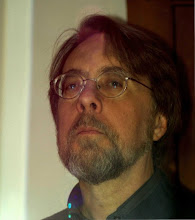
Yes, my other car, the one I don't drive a lot, is an antique. I've had these pictures almost since we bought it in 2001, and never got around to putting them up on the web. Well, here they are!
Chrysler's 1957 cars were exuberant fantasies. They were the first cars to have huge tailfins. When they appeared, so they say, General Motors' design team literally threw away their plans for the 1959 cars and started over. The Chrysler cars were designed by a genius named
Virgil Exner (his friends called him "Ex"), who said he was inspired by speedboat designs and by science fiction pictures of rocket ships. He said that his goal with these designs was to make cars that looked like they are moving even when they are standing still. He succeeded! There are a people around who loathe these cars for their flamboyant individualism, their naked assertion of human power, their extravagance, their seeming refusal to be safe and sensible. I love them for all the same reasons.

I've heard the front of this model described as "intimidating." Hm. Well, it does have a stylized eagle -- a bird of prey-- in the middle of the hood. The grill looks like a row of gleaming teeth. It seems to be saying "I eat Volkswagens for lunch." Yeah, I guess "intimidating" is a fair enough description. That's not what I love about it, but I have to admit, that's what it is.

The strips of chrome over the headlights are called the "eyebrows." People have a tendency to anthropomorphize cars. Or maybe they are designed to be anthropomorphic.
 They say that the 1957 Chrysler cars were the first in the world to have curved side windows. Evidently, "Ex" wanted curved doors, and realized that if the doors are curved, then the windows that slide in and out of them can be curved as well. It's part of the extremely sleek look he was after. Though the car is very long -- nineteen and a half feet! -- it is also very low. The top of the car is well below shoulder level for me. (My Jeep Wrangler is half as long and almost a food taller!) The effect Ex achieved is striking.
They say that the 1957 Chrysler cars were the first in the world to have curved side windows. Evidently, "Ex" wanted curved doors, and realized that if the doors are curved, then the windows that slide in and out of them can be curved as well. It's part of the extremely sleek look he was after. Though the car is very long -- nineteen and a half feet! -- it is also very low. The top of the car is well below shoulder level for me. (My Jeep Wrangler is half as long and almost a food taller!) The effect Ex achieved is striking.
 Think of driving a great white shark.
Think of driving a great white shark. A driver's-eye-view. The gauges are set in deep wells rimmed with gleaming steel. It somehow gives the thing a futuristic rocket-ship sort of look. This is a two tone car: white, and something Chrysler called "Indian Turquoise". The interior is dominated by the blue color. The windshield is lightly tinted blue, so driving it you feel as if it's just a blue world out there -- the whole cosmos. It's an experience of blueness.
A driver's-eye-view. The gauges are set in deep wells rimmed with gleaming steel. It somehow gives the thing a futuristic rocket-ship sort of look. This is a two tone car: white, and something Chrysler called "Indian Turquoise". The interior is dominated by the blue color. The windshield is lightly tinted blue, so driving it you feel as if it's just a blue world out there -- the whole cosmos. It's an experience of blueness. The "doughnut" on the lid of the trunk contains -- absolutely nothing. The spare tire is in a completely different area of the trunk. It's there for looks. Frank Lloyd Wright would have a cow.
The "doughnut" on the lid of the trunk contains -- absolutely nothing. The spare tire is in a completely different area of the trunk. It's there for looks. Frank Lloyd Wright would have a cow. The famous "gunsight" taillights. I always thought they looked more like jets of flame shooting out the back of a rocket. The chrome halos are like those glare circles that show up in photographs of bright lights.
The famous "gunsight" taillights. I always thought they looked more like jets of flame shooting out the back of a rocket. The chrome halos are like those glare circles that show up in photographs of bright lights.The original owner of this car was a Wisconsin farmer. He never married, and lived and farmed with his sister. She hated going to church in his pickup truck, so he went to Gillespie Bloomer Motors (now Don Miller Chrysler-Plymouth) in Madison and brought home an Imperial. There was something about it she didn't like, so he took it back to the dealer, and brought this one home. This one, she liked. For many, many years, they drove it to church, and nowhere else. And they would not even take it to church if it was snowing, and usually not if it was raining. Church and God are important, sure enough, but -- this is an Imperial after all! ... I respect that. This was a guy with a clear sense of values.
























